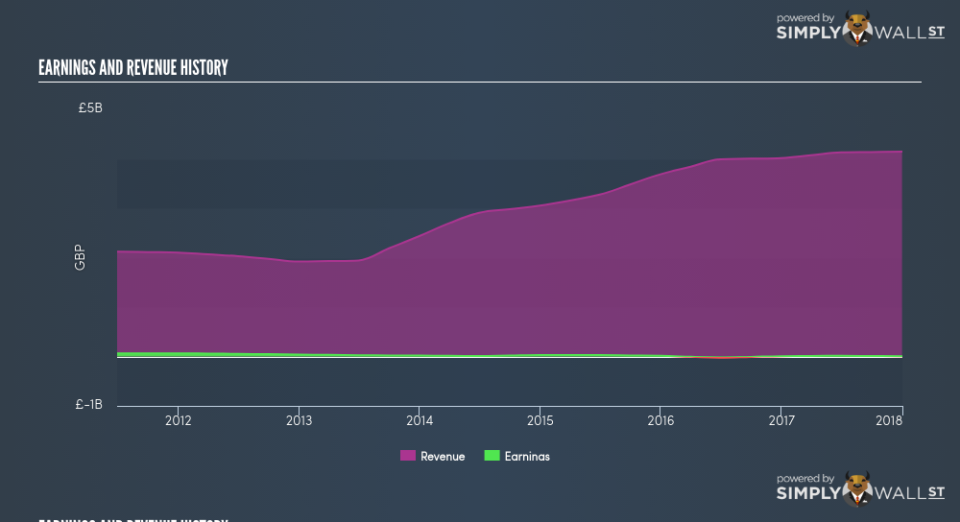Should You Be Concerned With Kier Group plc’s (LON:KIE) -50.70% Earnings Drop?

When Kier Group plc (LON:KIE) released its most recent earnings update (31 December 2017), I compared it against two factor: its historical earnings track record, and the performance of its industry peers on average. Being able to interpret how well Kier Group has done so far requires weighing its performance against a benchmark, rather than looking at a standalone number at a point in time. In this article, I’ve summarized the key takeaways on how I see KIE has performed. See our latest analysis for Kier Group
Was KIE weak performance lately part of a long-term decline?
KIE’s trailing twelve-month earnings (from 31 December 2017) of UK£3.50m has more than halved from -UK£24.50m in the prior year. Furthermore, this one-year growth rate has been lower than its average earnings growth rate over the past 5 years of -35.59%, indicating the rate at which KIE is growing has slowed down. Why is this? Well, let’s look at what’s going on with margins and if the entire industry is feeling the heat.
Revenue growth over the last few years, has been positive, however earnings growth has been deteriorating. This means Kier Group has been growing expenses, which is hurting margins and earnings, and is not a sustainable practice. Viewing growth from a sector-level, the UK construction industry has been growing its average earnings by double-digit 20.71% over the previous twelve months, and 19.28% over the past half a decade. This suggests that whatever tailwind the industry is profiting from, Kier Group has not been able to gain as much as its average peer.
In terms of returns from investment, Kier Group has not invested its equity funds well, leading to a 0.86% return on equity (ROE), below the sensible minimum of 20%. Furthermore, its return on assets (ROA) of 0.78% is below the GB Construction industry of 5.51%, indicating Kier Group’s are utilized less efficiently. However, its return on capital (ROC), which also accounts for Kier Group’s debt level, has increased over the past 3 years from 2.43% to 12.65%.
What does this mean?
Kier Group’s track record can be a valuable insight into its earnings performance, but it certainly doesn’t tell the whole story. Usually companies that experience an extended period of reduction in earnings are undergoing some sort of reinvestment phase in order to keep up with the latest industry disruption and growth. You should continue to research Kier Group to get a better picture of the stock by looking at:
Future Outlook: What are well-informed industry analysts predicting for KIE’s future growth? Take a look at our free research report of analyst consensus for KIE’s outlook.
Financial Health: Is KIE’s operations financially sustainable? Balance sheets can be hard to analyze, which is why we’ve done it for you. Check out our financial health checks here.
Other High-Performing Stocks: Are there other stocks that provide better prospects with proven track records? Explore our free list of these great stocks here.
NB: Figures in this article are calculated using data from the trailing twelve months from 31 December 2017. This may not be consistent with full year annual report figures.
To help readers see pass the short term volatility of the financial market, we aim to bring you a long-term focused research analysis purely driven by fundamental data. Note that our analysis does not factor in the latest price sensitive company announcements.
The author is an independent contributor and at the time of publication had no position in the stocks mentioned.

